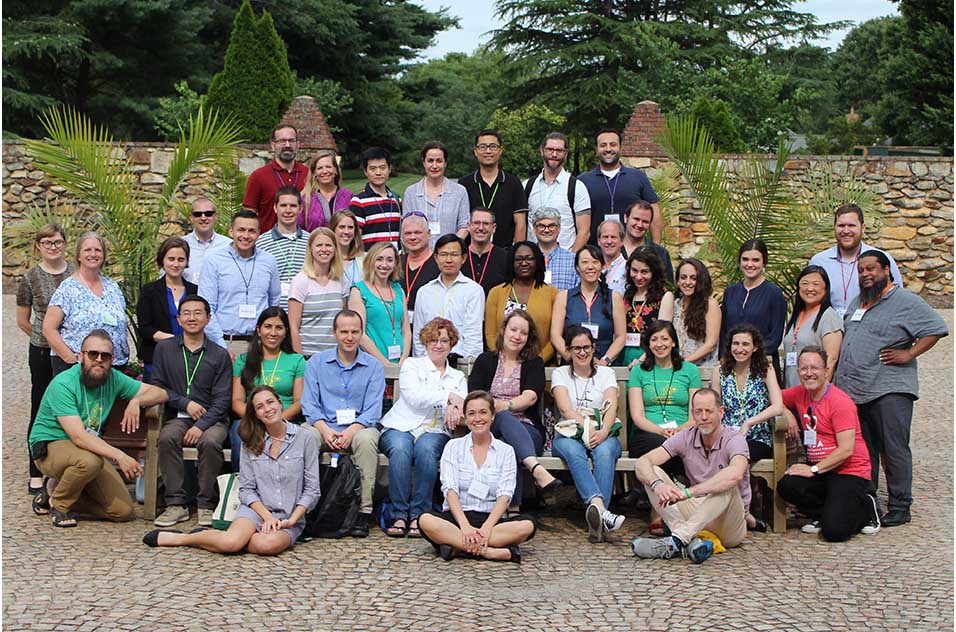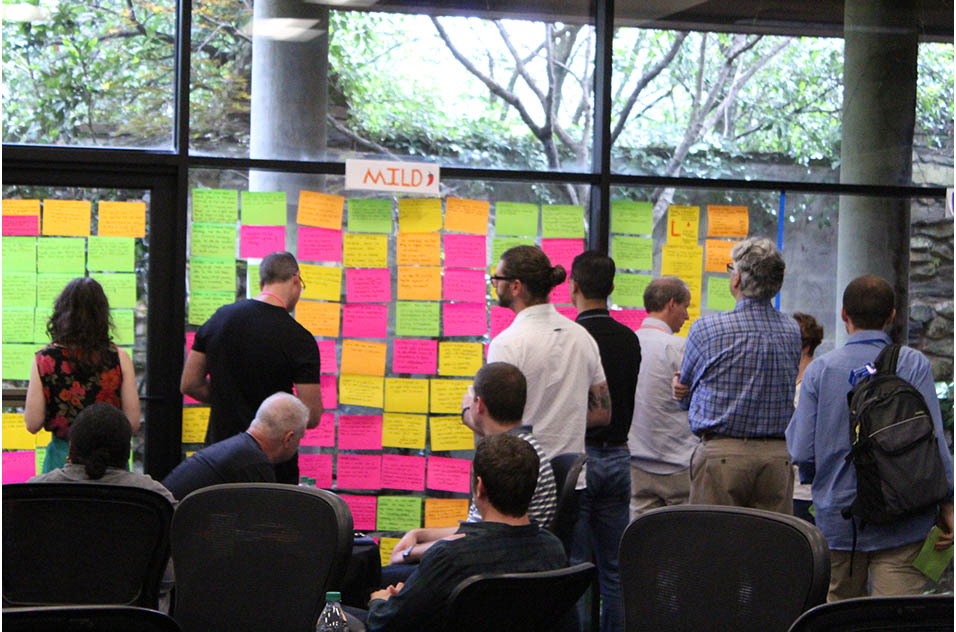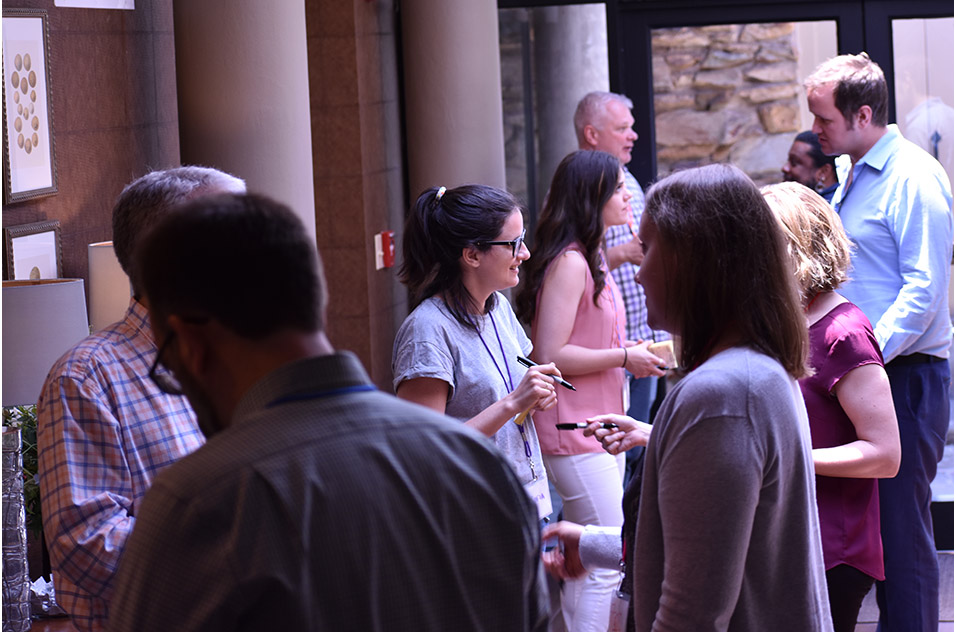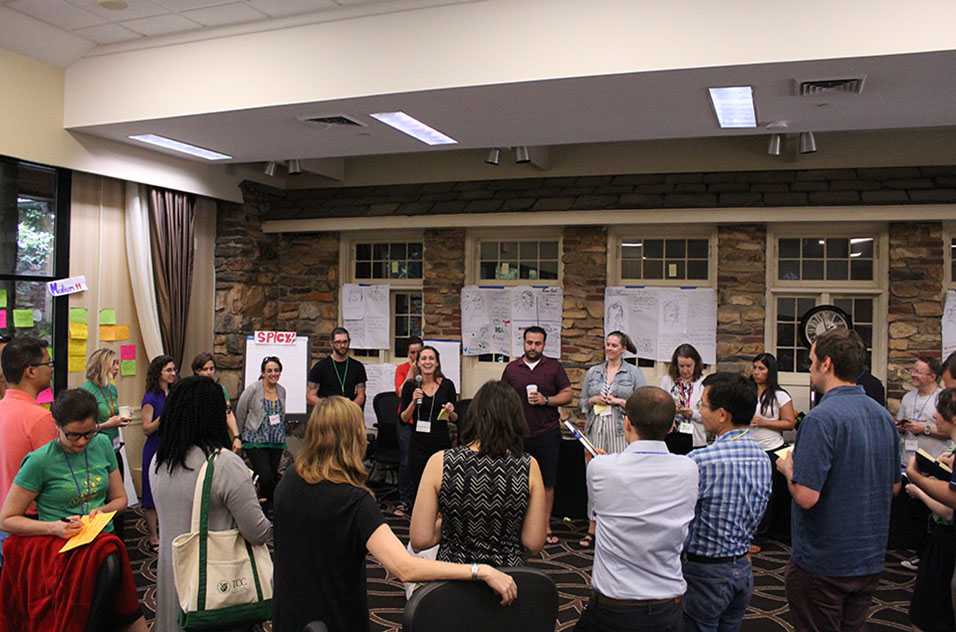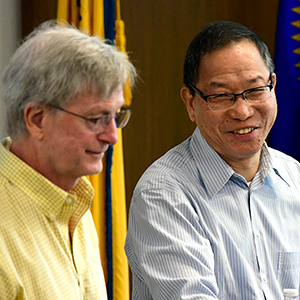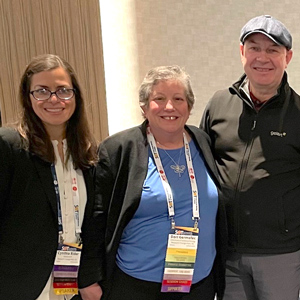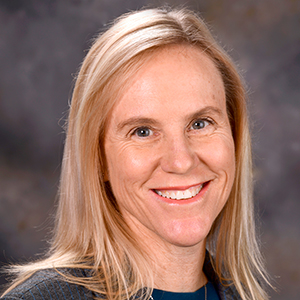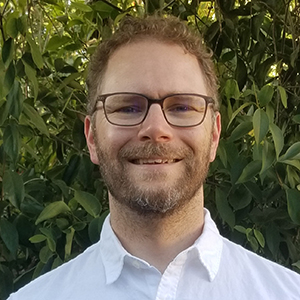 “Technology drives science and science drives technology,” said Fargo. “It’s all the same now, so the notion of an organizational model with separate science and technology trajectories no longer makes sense.” (Photo courtesy of Steve McCaw)
“Technology drives science and science drives technology,” said Fargo. “It’s all the same now, so the notion of an organizational model with separate science and technology trajectories no longer makes sense.” (Photo courtesy of Steve McCaw)David Fargo, Ph.D., took the reins as NIEHS Director of Environmental Science Cyberinfrastructure (DESC) on July 21. The new position reflects the institute’s recognition of the importance of informatics and information technology (I&IT) to scientific discovery, team-based science, and communicating findings to the broader community.
“As the DESC, Dr. Fargo will apply his extensive knowledge of informatics and information [to] pursue, evaluate, and implement state-of-the-art technology resources,” said Linda Birnbaum, Ph.D., director of NIEHS and the National Toxicology Program. “I am optimistic about the future of information technology and scientific computing at NIEHS,” she added.
In this senior leadership position, Fargo will facilitate scientific priorities so that NIEHS remains at the forefront of environmental health science research. Looking ahead, Fargo said that the next challenge on the horizon is to make massive amounts of data available to scientists in the ways that are useful to them.
“The role of cyberinfrastructure in general is that you have a lot of complex data, and you want to make it useful,” Fargo explained. “The pace of data generation continues to accelerate and the diversity of data types continues to broaden, and we need to stay on top of ways to make that data accessible and useful to scientists at NIEHS, NIH [National Institutes of Health], grantees, and beyond.”
“We are an early adopter of the model at NIH,” he said of his role overseeing cyberinfrastructure. “NIEHS leadership recognized the changing relationship of technology and science — that they are increasingly inseparable.”
Roadmap guides next steps
Fargo described that changing role in terms fundamental to the NIEHS mission. “As researchers, IT used to be the ground we walked on,” he said. “Now it is more like the air we breathe — it’s everywhere and essential to everything we do.”
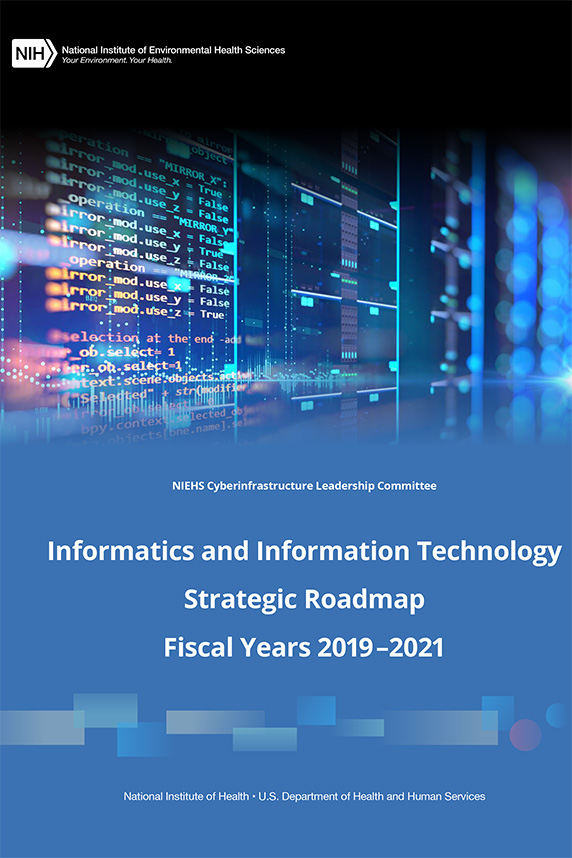 Advanced computing has become an integral part of conducting scientific research, as reflected in the new NIEHS I&IT strategic roadmap. (Image courtesy of NIEHS)
Advanced computing has become an integral part of conducting scientific research, as reflected in the new NIEHS I&IT strategic roadmap. (Image courtesy of NIEHS)Accordingly, NIEHS leadership focused on the future of big data, data science, high-performance computing, and bioinformatics to develop the institute’s first Informatics and Information Technology (I&IT) Strategic Roadmap.
“The roadmap will help to ensure that the institute has the essential technology, tools, and expertise to advance science, accelerate the translation of data to knowledge to action, and enhance scientific stewardship,” wrote members of the NIEHS Cyberinfrastructure Leadership Committee, which authored the report.
The authors emphasized that advances in scientific computing and data science are altering how discoveries are made and communicated, as well as how day-to-day operations are conducted. In his new role, Fargo will oversee the full breadth of these activities.
Data to knowledge to action
Take an example from the NIEHS Clinical Research Branch (CRB). The new roadmap addresses activities such as searching and using electronic health records; repositories of biosamples; and environmental, geospatial, medical, and research data. These data sources may be online, at collaborating institutions, or at NIEHS. Making these resources easier to use will exponentially increase CRB research capacity, the report states.
In another part of the institute, the relatively new NIEHS cryo-EM facility uses a software framework called RELION, for regularized likelihood optimization, to analyze data from this cutting-edge technology. “It’s a means of extracting knowledge from the thousands of images generated by the cryo-EM microscope,” Fargo explained.
RELION supports turning the images into knowledge about the structure of proteins or other molecules being studied. “We have the computational infrastructure at NIEHS, and it is hosted in parallel on Biowulf, a supercomputer shared across the entire NIH Intramural Research Program,” he said.
Search for new SIO
Fargo’s previous role was NIEHS Scientific Information Officer (SIO). For the past year, he served as acting DESC. Charles Schmitt, Ph.D., head of the NIEHS Office of Data Science, is chairing the SIO Search Committee, which will identify candidates to fill the vacant position.
Fargo plans to continue collaborating with other in-house researchers and pursuing his own research, which focuses on developing methods and tools to support knowledge discovery from very large data sets.
As DESC, he will oversee how NIEHS manages all aspects of I&IT and lead the Cyberinfrastructure Leadership Committee. The members of that committee manage scientific computing, IT infrastructure and hardware, data science, and web and social media.





